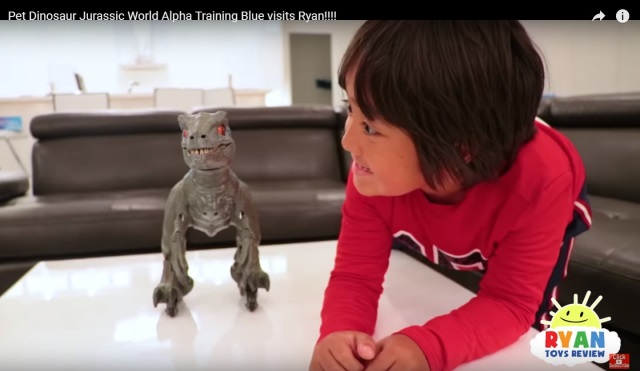
Kidfluencer Ryan on his YouTube channel
As influencer marketing explodes, more brands are engaging children to help promote youth-oriented products. Marketers increasingly ask young social media users with large numbers of followers, so-called kidfluencers, to mention or endorse their products. Toys and fashion items lead the list of promoted products, though other products have also tested use of kidfluencers. Brands like Target, Band-Aid, and CoverGirl have embraced the approach.
The young influencers offer significant advantages to brands. Children are relatable and likeable. They’re authentic in a way that’s not possible for most adults. They offer an ideal path to reach other children, who are often their main audience. And that youthful audience can influence parents’ buying decisions and might later become loyal adult customers. Brands may pay for advertising or send kidfluencers and their parents products to show and review.
Some young YouTube stars and their parents have scored an advertising windfall. The youngest person on Forbes’ list of the highest-paid YouTube stars for 2017 raked in an estimated $11 million in a year. With the help of his parents, seven-year-old Ryan, who’s known only by his first name, opens boxes of toys and plays with and reviews the toys. His YouTube program Ryan Toys Review had more than 10 million subscribers and has now reached 17 million subscribers. His show is part of a genre called unboxing, in which kids open boxes of toys. While hundreds of other kids star in YouTube unboxing programs, few earn millions.
Instagram Kidfluencers
Instagram offers another popular platform for kidfluencers. Cosmetic company Petite ‘n Pretty works with adolescent Instagram influencers, including child celebrities, to promote cosmetics to its target audience of children from four to 18. Children don’t charge the exorbitant rates of adult mega-influencers, despite their high engagement rates, the company’s founder, Samantha Cutler, told WWD. Some Petite ‘n Pretty influencers have engagement rates as high as 30 percent.
“Working with these younger kids and tweens is so authentic and genuine, and they’re excited because they’re not immersed in this beauty culture yet,” Cutler said. “They want to be creative and they love it. It’s refreshing.”
But advertising to children and tapping children as brand salespeople raises special issues, some experts warn. Advocates have questioned the ethics of advertising to children and using young social media influencers to promote products to them. Emilie Tabor, co-founder and chief marketing officer at influencer marketing agency IMA, offers guidelines for how to conduct kidfluencer marketing ethically and effectively in an article in Ad Week.
Clear disclosures. Already criticized for lack of appropriate disclosures of sponsored content, brands need to pay extra attention to disclosures with kidfluencers. Make sure sponsored posts follow FCC recommendations for including #sponsored or #ad hashtags.
Family-friendly content. Be careful to create and sponsor only family-friendly content. While many PR and marketing pros like to give influencers wide latitude to create content, review and monitoring of content becomes paramount in kidfluencer marketing.
Consider views of parents. Brands working with kidfluencers have two audiences: children and their parents. Even if brands develop products and promotions for children, parents will likely also view the same videos, images or other content. Keep parents in mind when developing marketing campaigns and ensuring family-friendly content.
Get them involved. Involve kidfluencers and their parents in the content creation process, and give them time and space to develop ideas. Ask them what they love about your product and what they think their audiences want to see. Is it an unboxing video? Or perhaps a vlog that demonstrates how they use the item in their everyday life?
Long-term relationships. Long-term relationships, rather than one-off deals, will lead to better content and higher engagement levels. Creators who feel attached to the brand produce more authentic content.
“The most important thing is to keep safety and well-being at the forefront of our minds. However, it’s important that we give this high-potential audience a voice in today’s consumer landscape,” Tabor concludes.
In addition, media measurement can gauge the effectiveness of kidfluencer marketing, help marketers impove the campaigns, and demonstrate their value to management.
Bottom Line: Many brands find that promoting products through children with large numbers of social media fans is an effective strategy. However, kidfluencer marketing comes with unique challenges and risks.
William J. Comcowich founded and served as CEO of CyberAlert LLC, the predecessor of Glean.info. He is currently serving as Interim CEO and member of the Board of Directors. Glean.info provides customized media monitoring, media measurement and analytics solutions across all types of traditional and social media.




